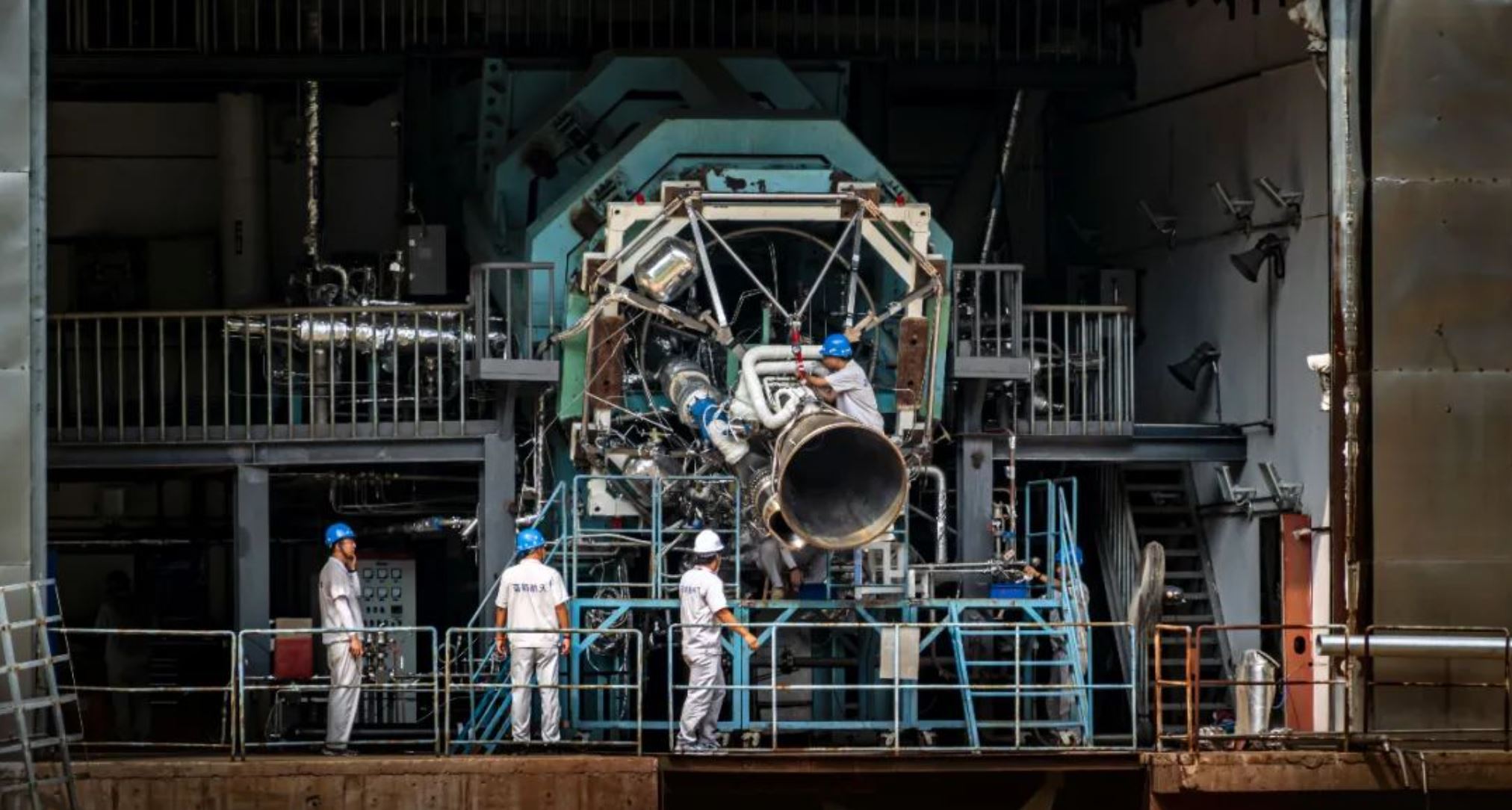HELSINKI — Landspace is preparing for a test launch of its Zhuque-2 rocket in what could be a marker for the progress being made by Chinese commercial launch companies.
The methane and liquid oxygen-powered Zhuque-2 is being readied for a launch attempt expected in the coming days and will take place at newly-built launch facilities at the national Jiuquan Satellite Launch Center in the Gobi Desert, northwest China.
Airspace closure notices suggest the launch attempt is scheduled for around 4 a.m. Eastern (0900 UTC) Saturday, Dec. 10.
Chinese firms Landspace, iSpace, OneSpace and Galactic Energy have all attempted or completed launches of light-lift solid rockets, along with spinoffs from giant state-owned enterprises CASC (China Rocket), CASIC (Expace) and the Chinese Academy of Sciences (CAS Space).
Landspace’s Zhuque-2 will however mark the first launch of a commercially-developed Chinese liquid rocket. The developments follow a Chinese government policy decision in late 2014 to open up portions of the space sector to private involvement.
The new launcher will also be much larger than anything so far attempted by its domestic rivals.
Landspace’s Zhuque-2 rocket is now at the launch pad of Site 96 at the Jiuquan Satellite Launch Center in China.
The rocket’s debut flight may take place in the coming days. This would make it the first methane powered orbital class rocket to fly. pic.twitter.com/rQcmmZJS5I
— Harry Stranger (@Harry__Stranger) December 5, 2022
Zhuque-2, which translated to “Vermillion Bird-2,” is powered by gas generator engines and will be capable of delivering a 6,000-kilogram payload capacity to a 200-kilometer low Earth orbit (LEO), or 4,000 kilograms to 500-kilometer sun-synchronous orbit (SSO), according to Landspace.
The rocket has a diameter of 3.35 meters—the same as a number of national Long March rockets—-a total length of 49.5 meters, a take-off mass of 219 tons and producing 268 tons of thrust .
While Landspace is working on making Zhuque-2 reusable, having in recent months tested a restartable version of the 80-ton-thrust TQ-12 engine, this first flight will be expendable.

Landspace announced late last month that it was already assembling the second Zhuque-2 at its base in Jiaxing, Zhejiang province.
Landspace first unveiled the Zhuque-2 project at the 2018 International Astronautical Congress (IAC) ahead of its Zhuque-1 launch. It initially targeted a test launch for 2020. Last November the company’s CEO Zhang Changwu said in an interview that Zhuque-2 could lift off in the first quarter of 2022.
In the global context, Zhuque-2 will also be the first orbital launch of a methane-fueled rocket from a field of in-development launch systems. These include SpaceX’s Starship, the ULA Vulcan, Blue Origin’s New Glenn, Rocket Lab’s Neutron and Terran 1 from Relativity Space.
Landspace is one of the earliest and best-funded of China’s emerging commercial launch firms. The launch will be only the second to be attempted by Landspace. The first, with the much smaller and simpler solid-propellant Zhuque-1, ended in failure. It was however a milestone in that it marked the first flight of a launch by a privately-funded Chinese launch firm.
ISpace and Galactic Energy have since reached orbit, with the latter having succeeded with all four launches of its Ceres-1 solid rocket to date. Three consecutive failures from iSpace have however added a perceived amount of pressure on private firms to succeed, as their performance is seen to be tied to the overall image of China’s space endeavors.
Beijing-based iSpace is developing its own methalox rocket, the Hyperbola-2. The firm recently unveiled a first stage test article at Jiuquan in preparation to conduct hop tests.
Galactic Energy is meanwhile developing its two-stage, kerosene-liquid oxygen Pallas-1, designed to carry 5,000 kilograms to LEO or 3,000 kilograms to a 700-kilometer SSO. Both could launch in 2023.
Another firm, Deep Blue Aerospace, has begun hop tests for its planned Nebula-1 reusable kerolox launcher.
Officials from China’s main space contractor CASC have also presented concepts for reusable, methalox launchers and a methane-powered version of the Long March 9. Its main Shanghai rocket-making institute is looking at methalox launch solutions.
China’s government has sought to foster the development of commercial space with policy support and guidance, including regulations for launch and small satellites and national strategies supporting “satellite internet.”Investment, from a mix of venture capital and government-linked investment vehicles, has also flowed in recent years.
A number of commercial launch companies are stating the national satellite internet project as a potential source of contracts and revenue.
The military-civilian fusion national strategy has also allowed production of sensitive, dual-use technologies to take place in the private sector. Methane-LOX engines have been under study by CASC prior to the development of commercial Chinese methane rocket engines.
Related
ncG1vNJzZmiroJawprrEsKpnm5%2BifKS0yKecrJ1dmLyuucSrmqKZnGK6psDHmqWeZZaqsq2xw2apqJubmsFuv8StZJ%2BnomKzqr7SrWSlmaWjsKl7